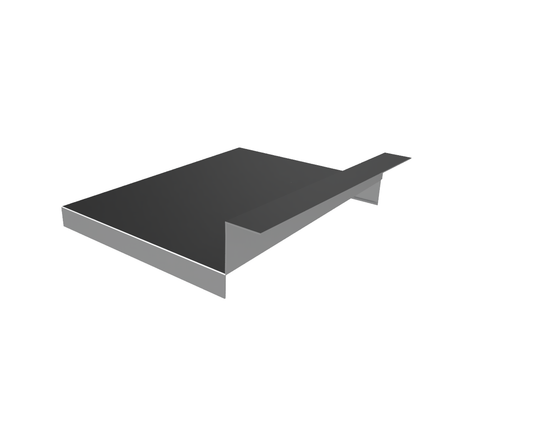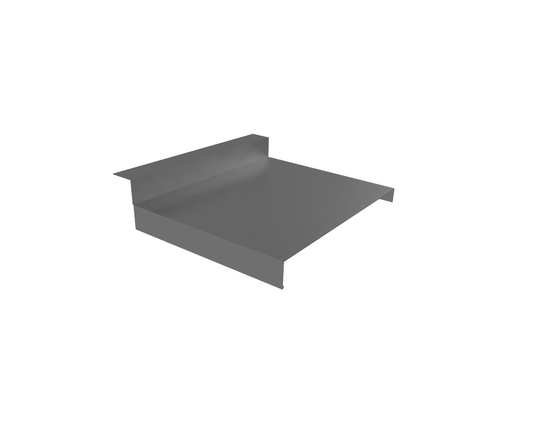Welcome to our comprehensive blog post about aluminium copings and cappings. Whether you're an architect, house builder, or simply someone interested in the world of construction, this guide is designed to provide valuable insights into the applications, benefits, and installation techniques of aluminium copings and cappings. We will explore how these versatile solutions can protect, enhance, and add a touch of elegance to various projects. Join us as we delve into the world of decretive architecture, and discover the possibilities they offer for transforming parapet walls. Let's get started!

Understanding Aluminium Copings and Cappings
Coping (from cope, Latin capa) consists of the capping or covering generally at the top of masonry parapets or freestanding walls and is used as protection from the weather. Aluminium copings and cappings are versatile solutions designed to protect and enhance parapet walls. In this section, we will define and highlight their unique characteristics and benefits. From exceptional weather resistance and lightweight properties to low maintenance requirements, aluminium copings and cappings offer both functional and aesthetic advantages that make them an ideal choice for construction professionals.
The Differences Between Copings and Cappings
Function:
- Copings: Copings are primarily used as a protective layer placed on top of parapet walls or other wall structures to prevent water ingress and protect the underlying materials from weather damage.
- Cappings: Cappings are often used as a decorative or finishing element on top of walls, columns, or other architectural features. They add visual appeal and provide a polished look to the structure.
Design and Profile:
- Copings: Copings typically have a more functional design, prioritising effective water shedding and weather resistance. They often feature a sloped or chamfered profile to redirect water away from the wall.
- Cappings: Cappings focus more on aesthetics and can have various designs, profiles, and shapes, such as flat, curved, or decorative profiles, to enhance the visual appearance of the structure.
Installation:
- Copings: Copings are installed horizontally along the top edge of a wall, usually using brackets or clips for secure attachment. They are designed to provide a protective barrier against water infiltration.
- Cappings: Cappings can be installed horizontally or vertically, depending on the specific application. They are often secured in place with adhesives or mechanical fasteners, adding a finishing touch to the architectural element.
Material:
- Copings and cappings can be made from various materials, including aluminium, stone, concrete, or composite materials. The choice of material depends on factors such as durability, aesthetics, and project requirements.
While copings primarily serve a functional purpose by protecting walls from water damage, cappings focus on enhancing the visual appearance and providing a decorative finish. Both elements play important roles in construction and architecture, albeit with distinct differences in their design, installation, and intended use.

Exploring Applications and Systems
Aluminium copings and cappings find diverse applications in various construction scenarios. From commercial buildings to residential projects, they offer seamless integration and superior performance. In this section, we will explore the wide range of applications where aluminium copings and cappings can be used effectively. Additionally, we will discuss different coping system options, ensuring you select the most suitable solution for your specific project requirements.
Parapet Walls:
- Copings: Copings are extensively used on parapet walls to provide a protective barrier against water penetration. They prevent water from seeping into the wall structure and protect underlying materials, such as masonry or concrete, from weather-related damage
- Cappings: Cappings can be applied to parapet walls to add a decorative touch and enhance the overall aesthetic appeal of the building. They can feature different profiles, finishes, or textures to complement the architectural style.

Roof Edges and Eaves:
- Copings: Copings are commonly installed along roof edges and eaves to safeguard the underlying structure from water intrusion. They redirect rainwater away from the roofline and help prevent moisture damage to the building envelope.
- Cappings: Cappings can be used to provide a visually pleasing transition between the roof edge and the surrounding architectural elements. They can create a clean and finished look to complement the roof design.
Columns and Pilasters:
- Copings: Copings can be employed on top of columns and pilasters to protect them from water damage and extend their lifespan. They offer an additional layer of defense against moisture infiltration, especially in exposed or outdoor applications.
- Cappings: Cappings can be used on columns and pilasters to add a decorative element and create a cohesive visual design. They can feature ornate designs or unique profiles to enhance the aesthetic appeal of the architectural features.
Wall Cladding Transitions:
- Copings: Copings can be utilised as transition elements between different types of wall cladding materials. They serve as a protective layer, ensuring a watertight seal and preventing water from seeping into the wall assembly at transition points.
- Cappings: Cappings can be applied at wall cladding transitions to provide a visually appealing finish and create a smooth integration between different materials or sections of the wall. They can help maintain a consistent design language throughout the building facade.
Balustrades and Railings:
- Copings: Copings can be used on top of balustrades and railings to provide a functional barrier against water infiltration, protecting the underlying structure and ensuring durability over time.
- Cappings: Cappings can add an elegant touch to balustrades and railings, serving as a decorative element that enhances the overall aesthetic of the architectural feature.
These examples illustrate the versatile applications of copings and cappings in various construction scenarios. Whether for functional protection or aesthetic enhancement, copings and cappings play essential roles in both practical and visual aspects of building design.
Benefits and Advantages
Aluminium copings and cappings offer numerous advantages over other materials. Using aluminium copings offers several advantages over alternative options like stone.
Firstly, aluminium copings are lightweight, making them easier to handle and install, which can save time and effort during construction. Additionally, aluminium is highly durable and weather-resistant, ensuring long-lasting protection for parapet walls. Unlike stone, aluminium copings are available in various profiles and sizes, allowing for greater design flexibility to meet specific project requirements. Furthermore, aluminium copings are low maintenance, requiring minimal upkeep compared to natural materials like stone, which may require regular sealing or repairs. Overall, aluminium copings provide a cost-effective and efficient solution without compromising on aesthetics or functionality.
Explore Our Range of Aluminium Copings and Cappings
We understand the importance of selecting high-quality materials for your construction projects. That's why we offer a comprehensive range of aluminium copings and cappings to meet your specific needs. With various profiles, finishes, and sizes available, our products are designed to elevate the aesthetics and functionality of your parapet walls.
Visit our product page or contact our knowledgeable sales team to explore our wide selection of aluminium copings and cappings. Our dedicated professionals are ready to assist you in choosing the perfect solution for your project requirements. Trust us as your reliable partner to deliver top-notch products and exceptional customer service that exceeds your expectations.
Unlocking the Potential: Unveiling the Versatility of Copings and Cappings in Construction
By now, you have gained valuable insights into the world of aluminium copings and cappings. From their versatile applications to their installation techniques and aesthetic benefits, these solutions offer a compelling combination of durability and style for parapet walls. Whether you're an architect, house builder, or construction professional, incorporating aluminium copings and cappings into your projects will enhance their visual appeal and long-term performance. Start transforming your parapet walls today with our high-quality aluminium copings and cappings.










